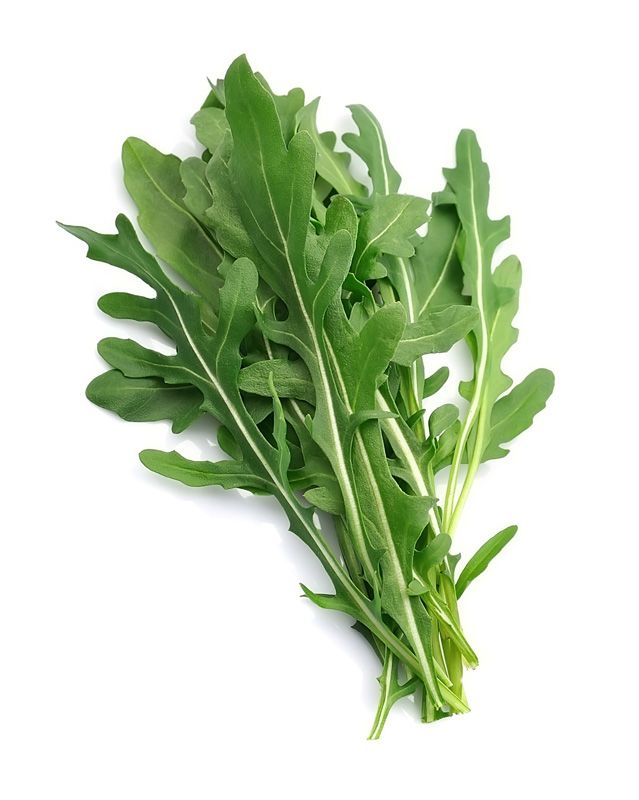Quick Guide: Planting, Growing & Harvesting Arugula
Arugula has been grown and utilized as a medicinal plant and aphrodisiac since ancient Rome. The leafy green is currently used in Italian cuisine, as well as being farmed and consumed all over the world. The leaves are dark green in the shade and have deep notches on both sides. Arugula is generally served raw as a salad green, but it may also be prepared in a variety of ways. Arugula is really a member of the cabbage and mustard green families. The flavor of arugula is peppery, spicy, and somewhat sour. It has a green freshness to it that makes it a favorite salad mix ingredient. Similar to fresh spinach, the leaves are delicate and have a crisp stem. Cooked arugula has a fine texture similar to cooked spinach.
Arugula refers to a group of leafy salad greens with spicy, aromatic leaves. It’s an annual, like other salad greens, and grows best in cold climates. Fresh arugula has only five calories and nearly no fat. The green vegetable contains vitamin K, which may be necessary for blood clotting and bone strength, as well as vitamin A, which is considered to aid with immunity, skin health, and eyesight. Arugula is a healthy supplement to any diet because of its high-water content.
How to Plant Arugula
· When to Plant:
Arugula seeds grow in soil as cold as 40°F (4°C), so spread them outside in the spring. For an autumn or winter harvest, sow in late summer or early fall.
· Prepare the Ground:
Arugula thrives in nutrient-rich, well-drained soil. Although it may grow in a range of environments, it grows well in slightly acidic soil with a pH of 6 to 7. For optimum results, plant in full sun (6 hours or more of sunshine). In addition to full light, arugula will thrive in light shade.
· How to Plant:
Plant arugula 14-inch deep and roughly 1 inch apart in 10-inch rows. Sprinkle arugula seeds on their own or mix them together with other salad greens. It takes roughly a week for seeds to germinate. Soak seeds in water for a few hours before planting to speed up germination. For a continuous supply, sow fresh seeds every 2 to 3 weeks.
Growing Conditions for Arugula
If flea beetles are eating your plants, you have two options for protecting your greens. If you apply diatomaceous earth on the leaves, it will kill any soft-bodied insects. Covering the rows with Reemay, a cloth that keeps out insects while allowing light and water to pass through is a less hazardous option. Drape it over the plants and secure it with a few pins. Keep the soil uniformly wet to avoid bolting in hotter temperatures. The arugula plant prefers well-drained soil, but it also wants a lot of moisture, so water it often. The plants also like a pH of 6-6.5 in the soil. Arugula prefers cold weather and maybe planted as early as April in most regions of the United States. All you need are temperatures over 40 degrees Fahrenheit during the day. Provide some shade for warm-season crops to alleviate heat stress and prevent bolting.
Care for Arugula
Arugula is an example of a low-maintenance plant that has to be watered periodically if it doesn’t rain. Bolting is triggered by a lack of water, and the leaves become more peppery or bitter as a result. In terms of pests, you may encounter the giant white butterfly, which lays eggs on most varieties of cabbage and soft-leaved plants.
- Maintain a cool environment for the soil.
- Regularly run the hoe down the rows.
- Weeds must be removed.
Harvest Arugula
When the arugula leaves grow large enough to eat, they are ready for harvesting. Arugula is a cool-season salad green that grows quickly. You can harvest 30 to 40 days after seeding. Arugula leaves have a mustard-like taste and are acidic and spicy. Young leaves that are 2 to 3 inches long have a light flavor; however, older leaves might have a strong flavor.
When to Harvest Arugula
- Arugula may be harvested whenever the leaves are large enough to eat.
- Arugula thrives at temperatures ranging from 60 to 65 degrees Fahrenheit, which is most prevalent in the spring and fall.
- If the temperature rises over 80°F (26°C), begin plucking the outer leaves right away to prevent bolting. Arugula will typically produce throughout the winter in mild climates.
- Grow arugula in a cold frame or beneath a plastic tunnel in colder climates.
- Covering arugula plants with straw or hay in a cold frame will protect them from freezing.
- Arugula that has been overwintered will yield a crop in the early spring.
How to Harvest Arugula
Arugula may be harvested in three ways: grazed, cut, or pulled. Grazing is when you pluck a few leaves off a plant and let the rest grow. You may do this as soon as the leaves are a couple of inches long, which is early in the season. With shears, you can cut up to 1/3 of the plant. Thirdly, the entire plant will be pulled out. Do this near the end of the season when the plant stretches and flowers start to develop (bolting). Don’t pluck in direct sunlight to avoid withering.
Storage
Wrap arugula in paper towels and place it in a plastic bag in the refrigerator. The greens can be refrigerated for up to two days. Arugula in a bag can last up to five days if not opened. Use the greens within a couple of days of opening. Arugula that has been cooked can be stored in the refrigerator for up to three days. It’s not a good idea to freeze arugula.

